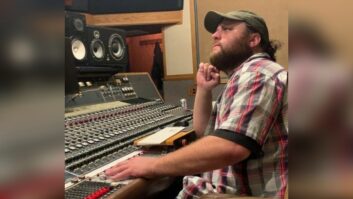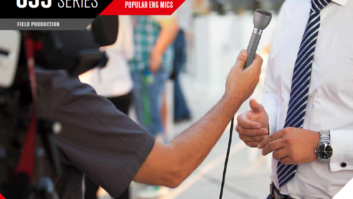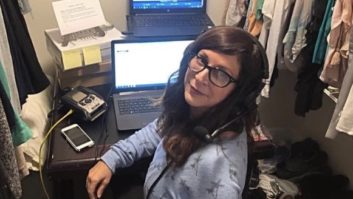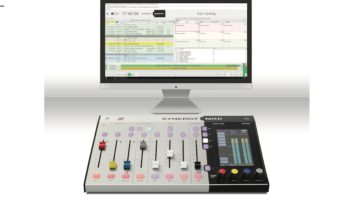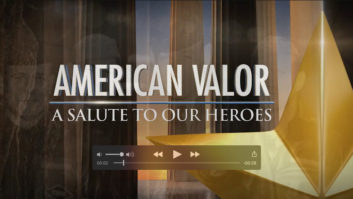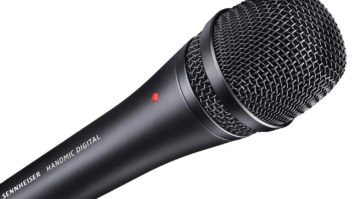One of our guiding principles in this column is to let readers know about new tools that can make life in the field easier for radio news reporters. But when it comes to microphones as a tool for road warriors, some of the best are old reliables. Here are three. (Mentions of particular products in this column aren’t necessarily endorsements by the user or the user’s employer.)
In an earlier article I wrote about items that our colleague Pete Combs — of WSB Radio News in Atlanta as well as CBS News, Radio — carries in his backpack.
He wouldn’t roll out from WSB’s Peachtree Street newsroom without his Audio-Technica 815a shotgun. Pete uses the 815a on a 10-foot boom pole in a mass interview situation to isolate the newsmaker. When he’s after natural sound, the 815a works well for him because of its directivity.
“I (also) like the 815a for voice tracks, too,” said Combs, “because I’m able to eliminate most, if not all, of the ambient sound. With the 815a, I am not sacrificing presence for a directional signal.”

Sirius XM NASCAR correspondent Claire B. Lang uses an Electro-Voice RE50 to interview Alan Gustafson, crew chief for driver Mark Martin. Pete says the 815a is his favorite microphone.
The 815a is 18.11 inches long, weighs 7.1 ounces and provides response 30 Hz–20 kHz; pattern is line + gradient. The model has been discontinued by Audio-Technica. A good alternative is A-T’s 8015 shotgun.
Game day
Sports reporters are a special group of road warriors. They like to keep equipment loads light because they are on the run gathering sound from locker room interviews, news conferences, back of a NASCAR transporter chat, and, when they can find a semi-quiet place, knocking out a voice track to give context to that sound.
Welcome to the world of Sirius XM’s Claire B. Lang and Scott Johnston of Emmis stations WIBC(FM)/WFNI(AM) in Indianapolis. Both rely on variants of the legendary Electro-Voice RE50 to help them cover their beats.
Claire B. Lang was the first satellite radio NASCAR reporter on XM in 2002 and is a mainstay of Sirius XM NASCAR on-track coverage. At a race, one will likely find Claire B. in the garage area getting the story for her “Dialed In” program straight from the newsmakers, whether they be drivers, crew chiefs, crew members or officials.
Her introduction to the RE50 came when she lost a mic she was carrying. “I needed one pronto. I went to a local music store, told them what I needed and they offered this classic (RE50) microphone that was old but durable, and they said the sound would be spectacular. I’ve had that microphone for 10 years now.”

Shure SM57 Lang says that microphone would have to accompany her if she were doing radio on the proverbial desert island. Her advice for fellow road warriors: “Don’t overlook the old classics for the brand new models. Sometimes what worked before still works, and is maybe a better, more durable choice.”
Johnston covers the Indianapolis Colts and Indianapolis Motor Speedway events as a sports reporter for ESPN’s WFNI(AM) 1070 The Fan, and news-talker 93.1 WIBC(FM). His introduction to the RE50 came when the station issued a microphone that resembled the RE50.
The clone “transmitted every hand shift and movement into audible clicks and noise that ended up on the recordings.” Scott then purchased his own RE50 about 15 years ago.
Johnston advises fellow road warriors to figure out how a microphone will be used before actually committing to purchase. He says he knew his RE50 mic would spend much of its time in the bottom of a gear bag, so he needed durability and something that did not require extra battery power. “Half the battle is figuring out what the mic will be used for, and the other half is matching what is out there to your needs.”
The RE50 is a descendant of the 635A dynamic omnidirectional microphone. The 635A is lovingly called the “Buchanan Hammer” because the microphone originally was made in Buchanan, Mich., and its sales people demonstrated its durability by pounding nails with it and then connecting the 635A to an audio system for its usual function. The RE50 effectively is a 635A in a larger body to provide shock absorption.
The RE50 is 7.75 inches long, weighs 9.5 ounces, has frequency response of 80 Hz–13 kHz and is omnidirectional.
Shure thing
Since 1987, I’ve carried a Shure SM77 cardioid microphone, which is a short-barreled version of the well-known SM57. The SM57 and SM58 mics were introduced in 1966 and share the same Unidyne III dynamic cardioid cartridge developed by the late Ernie Seeler.

Scott Johnston of WIBC(FM) and his trusty Electro-Voice RE50 Those microphones originally were made for broadcast interview use. Since then gigging musicians have picked up on the tonal qualities and ruggedness of the 57 and 58, making them required members of any respectable rock or jazz band mic kit. The SM57 is now listed by Shure as an instrument mic while the SM58 gets the vocal association.
The SM57 also has been used in a dual redundant microphone set up by the White House Communications Agency to mic every president of the United States since Richard Nixon. You’ll see those two microphones every time the president steps behind a presidential podium.
I’ve used my SM77 for interviews and voice tracks, and as a studio announce microphone with a foam windscreen. It’s my backup mic. The only service the SM77 has needed in those 22 years (even with a trip to Saudi Arabia and trips to lots of race tracks and news sites) has been a couple of paint jobs. A good thing, since the SM77 was discontinued a few years back by Shure. Pete Combs also carries an SM58 in his backpack.
Specifications: The SM57 (closest to my SM77) is 6-3/16 inches long, weights 10 ounces, has response of 40 Hz–15 kHz and is cardioid in pattern. The SM58 (with a metal windscreen) is 6-3/8 inches long, weighs 10.5 ounces, has response of 50 Hz–5 kHz and is cardioid.
Buying new or used, there are three mic tools that might deserve a place in your kit bag.
Paul Kaminski is the news director for the Motor Sports Radio Network, a contributor to CBS News, Radio and an editorial contributor to Radio World since 1997. His e-mail address is[email protected].





